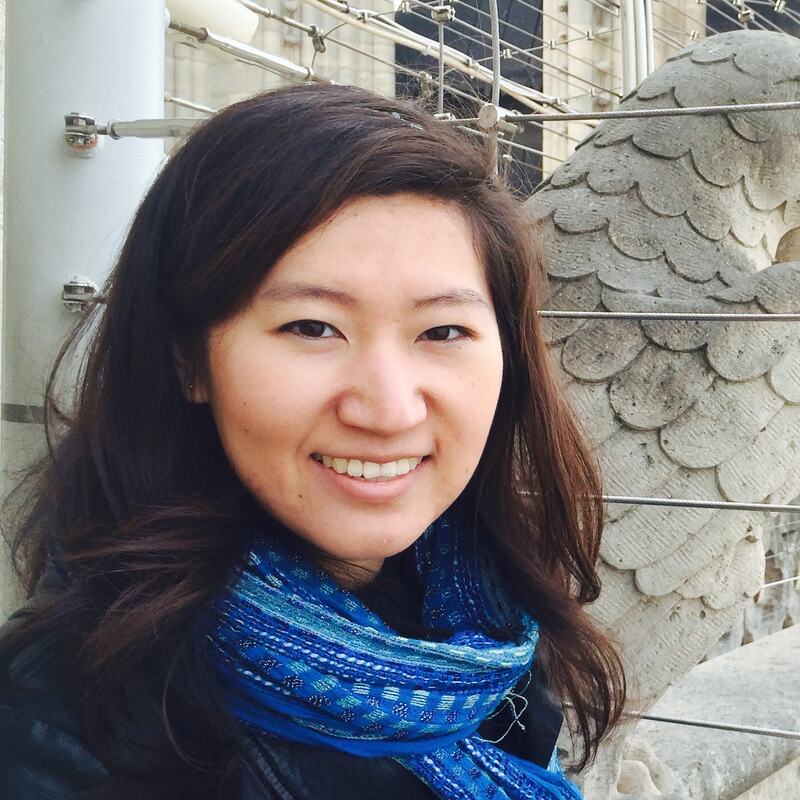XENOPHOBIA & PUBLIC HEALTH LESSON PLAN SERIES:
Smallpox, Fear & Racism During 1800s San Francisco
GRADE LEVEL: 6-12
Note: Lower grade levels may require adjustments. Activity 3 is most suitable for younger students.
SUGGESTED RUN TIME: 2 one-hour class periods (go through slide deck and pick from 1 or 2 of the below activities). To complete all 3 activities in class, recommended time is 4 class periods.
Note: Lower grade levels may require adjustments. Activity 3 is most suitable for younger students.
SUGGESTED RUN TIME: 2 one-hour class periods (go through slide deck and pick from 1 or 2 of the below activities). To complete all 3 activities in class, recommended time is 4 class periods.
In times of great emergency, blame and anger manifest in violent ways toward perceived outsiders. The COVID-19 pandemic is no exception. IHI is proud to present this series of lesson plans investigating the link between xenophobia and public health crises through in-depth historical case studies. This free instructor guide presents important but sobering history, highlights how past events mirror the present, and challenges both students and teachers to consider the COVID-19 pandemic in all its dimensions and take action against racism, fear, and hate.
Made possible with funding from CT Humanities.
this free lesson plan contains:
|
Instructor's Quick Summary
- 4 devastating smallpox epidemics occurred in San Francisco in the 1800s: in 1868, 1876, 1880, and 1887.
- San Francisco responded to these epidemics with racially targeted tactics that scapegoated the Chinese immigrant population in the city, including policies that forced Chinatown under close surveillance, prevented Chinatown residents from accessing healthcare resources, and attempted to further isolate and even exclude the Chinese.
- Thousands died during these epidemics, and the racist public health policies had little to no impact on stemming the spread of the disease. To the contrary, the introduction of the smallpox vaccine was the key factor in reducing the mortality rate in later outbreaks.
- Racial scapegoating still occurs today, notably in the 2020-21 novel coronavirus pandemic where East Asians and Asian Americans have been accused of spreading the virus and attacked in the streets. Encourage your students to make these connections and think critically about how to effectively combat public health crises and push back against discrimination.
Key Understandings for Students
1. Racism and anti-immigrant sentiment tend to spike during times of great emergency, such as public health crises. Racial scapegoating occurs when one racial group is unfairly singled out and blamed for a particular problem, leading to mistreatment and injustice.
2. Public health policy created based on racist beliefs or agenda have devastating consequences on the population and distract from more effective ways of preventing or stopping disease outbreaks.
3. Racism and xenophobia are not only confined to the past, but continue to impact us today. During public health crises today, including the COVID-19 pandemic, we see similar patterns of racial scapegoating. We all have a responsibility to fight back against racial scapegoating and advocate for better ways of protecting the public health.
2. Public health policy created based on racist beliefs or agenda have devastating consequences on the population and distract from more effective ways of preventing or stopping disease outbreaks.
3. Racism and xenophobia are not only confined to the past, but continue to impact us today. During public health crises today, including the COVID-19 pandemic, we see similar patterns of racial scapegoating. We all have a responsibility to fight back against racial scapegoating and advocate for better ways of protecting the public health.
Common Core Standards
|
Grades 6-8
CCSS.ELA-LITERACY.RH.6-8.1 CCSS.ELA-LITERACY.RH.6-8.2 CCSS.ELA-LITERACY.RH.6-8.3 CCSS.ELA-LITERACY.RH.6-8.7 CCSS.ELA-LITERACY.RH.6-8.8 CCSS.ELA-LITERACY.RI.6.1 CCSS.ELA-LITERACY.RI.6.2 CCSS.ELA-LITERACY.RI.6.3 CCSS.ELA-LITERACY.RI.6.4 CCSS.ELA-LITERACY.RI.6.6 CCSS.ELA-LITERACY.RI.6.7 CCSS.ELA-LITERACY.RI.6.8 CCSS.ELA-LITERACY.RI.6.9 CCSS.ELA-LITERACY.RI.7.1 CCSS.ELA-LITERACY.RI.7.2 CCSS.ELA-LITERACY.RI.7.3 CCSS.ELA-LITERACY.RI.7.4 CCSS.ELA-LITERACY.RI.7.6 CCSS.ELA-LITERACY.RI.7.8 CCSS.ELA-LITERACY.RI.7.9 CCSS.ELA-LITERACY.RI.8.1 CCSS.ELA-LITERACY.RI.8.2 CCSS.ELA-LITERACY.RI.8.3 CCSS.ELA-LITERACY.RI.8.4 CCSS.ELA-LITERACY.RI.8.6 CCSS.ELA-LITERACY.RI.8.8 CCSS.ELA-LITERACY.RI.8.9 |
Grades 9-12
CCSS.ELA-LITERACY.RH.9-10.1 CCSS.ELA-LITERACY.RH.9-10.2 CCSS.ELA-LITERACY.RH.9-10.4 CCSS.ELA-LITERACY.RH.9-10.5 CCSS.ELA-LITERACY.RH.9-10.6 CCSS.ELA-LITERACY.RH.9-10.8 CCSS.ELA-LITERACY.RH.9-10.9 CCSS.ELA-LITERACY.RH.11-12.1 CCSS.ELA-LITERACY.RH.11-12.2 CCSS.ELA-LITERACY.RH.11-12.3 CCSS.ELA-LITERACY.RH.11-12.4 CCSS.ELA-LITERACY.RH.11-12.6 CCSS.ELA-LITERACY.RH.11-12.7 CCSS.ELA-LITERACY.RH.11-12.8 CCSS.ELA-LITERACY.RH.11-12.9 CCSS.ELA-LITERACY.RI.9-10.1 CCSS.ELA-LITERACY.RI.9-10.2 CCSS.ELA-LITERACY.RI.9-10.3 CCSS.ELA-LITERACY.RI.9-10.4 CCSS.ELA-LITERACY.RI.9-10.6 CCSS.ELA-LITERACY.RI.9-10.8 CCSS.ELA-LITERACY.RI.11-12.1 CCSS.ELA-LITERACY.RI.11-12.2 CCSS.ELA-LITERACY.RI.11-12.3 CCSS.ELA-LITERACY.RI.11-12.4 CCSS.ELA-LITERACY.RI.11-12.6 |
For more information, please visit www.thecorestandards.org.
Further Readings & Resources
Shah, Nayan. Contagious Divides: Epidemics and Race in San Francisco's Chinatown. Berkeley: University of California Press, 2001.
Immigrant History Initiative. 500 Years of Migration, published 2018, https://www.immigranthistory.org/chineseamerican.html
New York Historical Society, Chinese American: Exclusion/Inclusion Curriculum Guide, published 2014, https://chsa.org/wp-content/uploads/2016/09/Chinese-American-Classroom-Materials-1.pdf
Chinese Historical Society of America, San Francisco Chinatown 1906-2006: Selected Milestones, published 2006, http://www.chsa.org/wp-content/uploads/2010/05/Chinatown_Rising_Timeline.pdf
Immigrant History Initiative. 500 Years of Migration, published 2018, https://www.immigranthistory.org/chineseamerican.html
New York Historical Society, Chinese American: Exclusion/Inclusion Curriculum Guide, published 2014, https://chsa.org/wp-content/uploads/2016/09/Chinese-American-Classroom-Materials-1.pdf
Chinese Historical Society of America, San Francisco Chinatown 1906-2006: Selected Milestones, published 2006, http://www.chsa.org/wp-content/uploads/2010/05/Chinatown_Rising_Timeline.pdf
Lesson Plan Components
Activity 1:
|
Activity 2:
|
Activity 3:
|
CURRICULUM DEVELOPMENT TEAM
REVIEW BOARD
Dr. Nayan Shah
|
Sheena Iwamoto
|
Hilary Gushwa
|







